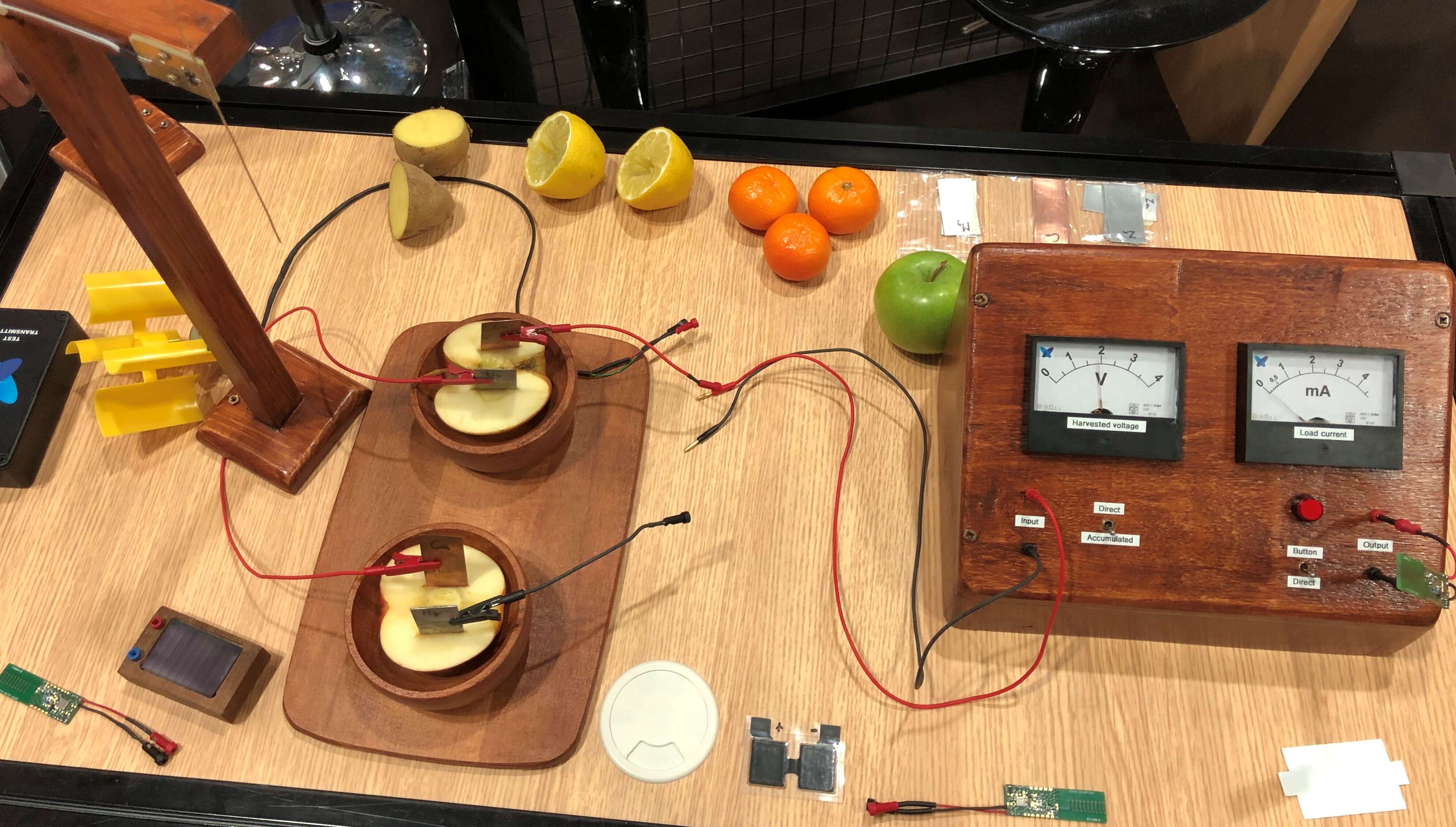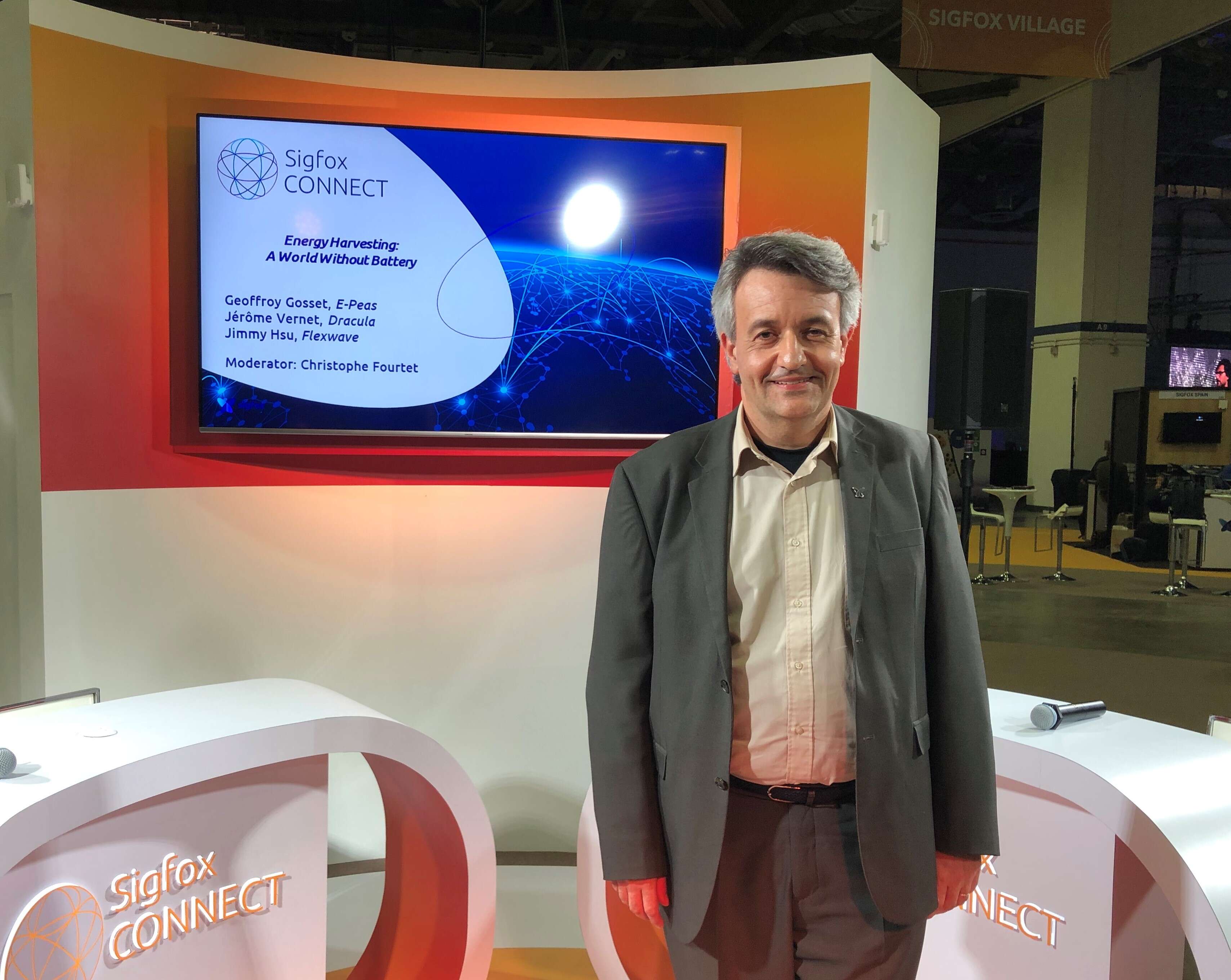A Billion Devices Connected to Sigfox ‘Attainable’ by 2023
Article By : Nitin Dahad

Sigfox founders are confident they'll have 1 billion IoT devices connected to their network in just three years.
Singapore — Sigfox CEO and co-founder Ludovic Le Moan said that with 16 million devices expected to be connected to its network by the end of this year, the company believes that having 1 billion devices connected to Sigfox by 2023 is an attainable goal.
Sigfox said it is enhancing its network connectivity for the Internet of things (IoT), and announced new deployments, modules and partners at its third annual event for its partner ecosystem and customers this week.
Sigfox has taken to referring to itself as the ‘0G’ network, on the premise that mass deployment of IoT is about enabling the communications of tiny amounts of data through ultra-low power consumption devices.
Low power consumption is one thing, but the key to getting to 1 billion connected devices is enabling connectivity at extremely low cost, which is why Sigfox has developed a US$0.20 reference design and is also experimenting with energy harvesting to power remote connected devices, significantly improving longevity by removing the need to replace batteries so often. Sigfox believes that if it can help address the cost and energy consumption barriers, it can achieve its one billion target for 2023.

Sigfox is experimenting with enregy harvesting, using natural radiation in the atmosphere, plus other natural sources, using fruits as an example. It said the current that can be generated, around 200µA, can be sufficient for transmitting data on the Sigfox network in some circumstances. It’s still a long way away from commercialization, but printed batteries could also be used (Image: Nitin Dahad / EE Times)
One of the big challenges Sigfox has right now is how to get to these numbers. What is the differentiation with, for example, low power wide area networks like LoRaWAN and narrowband IoT? At the event in Singapore, we managed to grab some precious time from radio industry veteran Christophe Fourtet, who is co-creator and co-founder of the Sigfox technology and network. We’ll come to that later, but first a little about the business.
Recommended
Sigfox Founder Seeks ROI in IoT
Sigfox began in France in 2009 and has raised nearly $300 million. Investors include Intel Capital, and Partech Ventures, as well as many others including Salesforce Ventures, Total Ventures, and Tamer Group. Sigfox’s focus is primarily in building out its global network and selling subscriptions to manage data on its network. So a major part of its activity is finding partners who can roll out the network in their countries, and encouraging the device ecosystem for sensor and module developers. It has direct operations or subsidiaries in France, Germany, Spain, Portugal and the U.S., while it is actively searching for operators who can deploy base stations and networks in countries beyond the 65 it says it covers presently. India, China and Russia are huge potential markets the company hopes to get into.
This clearly requires significant investment and marketing. According to chief operating officer Franck Siegel, they may look for more funding to do this, and he expects Sigfox may be profitable towards the end of 2021 or early 2022. He highlighted that some 80% of its business is in asset tracking, and this is mainly in moving products in the automotive industry, which has a huge number of players in the supply chain and many touchpoints where tracking could improve operational efficiency and overall costs. The main customer in automotive is French car group PSA. The other major area is in postal services, and it is working with DHL in tracking its pallets, which can cost hundreds of dollars or more if they are lost or misrouted.
Siegel told EE Times that one of its investors, Tamer Group, has asked it to look into pharmaceuticals so it will possibly be looking at this sector in the near future. He highlighted two other areas of focus for Sigfox’s customers right now; one is condition monitoring, while the other as a backup for connectivity with some customers.
Barriers to adoption
What were the barriers to adoption, we asked Siegel?
He said there are three main barriers. Initially it was connectivity, which is why building the network is key. The second was availability of devices. “It takes 2-3 years for a device to be developed. Now we have 700 certified Sigfox devices. The third factor, he emphasized, is the business case. Companies need to be able to see a return on investment (ROI) after spending on both sensors and network costs; he highlighted how both Michelin and DHL were able to see this ROI.
Typical costs per sensor used by its major logistics and supply chain customers in automotive and delivery services are typically between $15 and $50. If it can get these costs down to $1, then it has the potential to tackle a wider disposable market — where the sensors can be integrated into the packaging itself.
Siegel said the biggest challenge for Sigfox is the blurring of the distinction between its offer and NB-IoT and LoRaWAN. He comments, “They are not competitors, but the marketing power of the major telcos [against Sigfox’s small marketing budget] means they blur the message and position us incorrectly. And of course, we’ve had to invest in the network so it will clearly take longer for adoption. In fact, having 16 million devices on the network to date is quite an achievement.”
Significantly less drain on the battery
This is where the technical prowess of Christophe Fourtet comes in. He articulates how Sigfox is different. “We are using the unlicensed frequency band and there are fundamental differences in the way we manage spectrum.”
He explained that a Sigfox device does not continually try to synchronize with the network. “If there’s no data to send, then nothing happens [in contrast to cellular]. So that means significantly less drain on the battery.” He continued to say that by enabling ultra-low energy devices as a result of its spectrum management means a new class of device can be created, potentially even using a printed battery.
We asked what was different about the base Sigfox architecture. He illustrated by explaining the principle of the Nyquist theorem, in which the highest frequency component in an analog signal determines signal bandwidth. However, he said he looked at it with an alternative approach. “A second theorem is: in a finite bandwidth you could have an infinite quantity of information. Then you need to be able to extract your particular signal from this soup.”

Christophe Fourtet, co-creator and co-founder of the Sigfox technology and network (Image: Nitin Dahad / EE Times)
He adds, “So even though the bandwidth we occupy has many signals, we make the job of processing these signals simple. Within this bandwidth, we do the job of retrieving the signal.” This is covered under one of Sigfox’s patents, “Method for searching for a useful signal in a multiplexing band,” which describes its solution for searching for the presence of a useful signal having a central frequency which is not known beforehand, and to detect and decode these signals with no errors.
Fourtet said his vision is to have ultra-low power devices on the network that can be powered using energy harvesting. The focus for him is to bridge the digital world with the physical world again. He has always been in the radio business having started as a radio engineer with Sagem and then a cellular hardware engineer with Motorola, followed by Freescale. He said what drove him to start Sigfox was that he’s spent many years focusing on the higher data rates, and the system was getting less and less energy efficient. So this becomes ineffective for monitoring simple assets. A key message we heard from the founders of Sigfox was that network was designed for handling small data messages effectively, and hence enabling ultra-low power and low cost devices.
Subscribe to Newsletter
Test Qr code text s ss


